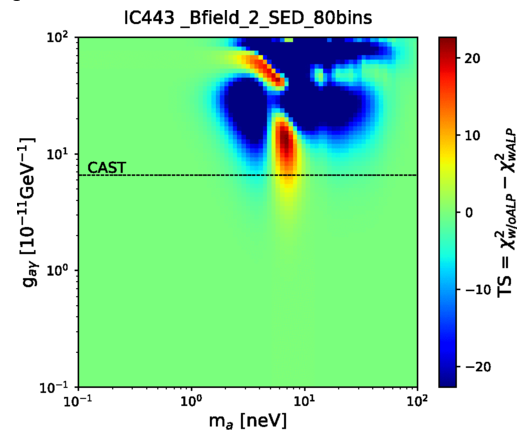Searching for spectral oscillations due to photon-axionlike particle conversion using the Fermi-LAT observations of bright supernova remnants
2018-04-02The axion is one type of pseudoscalar particle postulated to a solution to the strong CP problem. If the axion mass is so small that there is no lighter particle to decay into, it is predicted that the universe would be abounded with the cold Bose Einstein condensate of primordial axions. Consequently, axions could plausibly account for all or a significant fraction of the cold dark matter (DM). Axionlike-particles (ALPs), particles that have similar properties to axions, have been proposed as an alternative to axions to explain the DM.
ALPs can convert to photons and vice versa in electromagnetic fields via the Primakoff process. γ-ray photons can oscillate to ALPs (and vice versa) when passing through external magnetic fields. If the field strength is strong enough and the propagation distance is long enough, the photon-ALP oscillation could induce a specific modulation in the spectra of γ-ray sources, which could be a smoking-gun signature for the existence of ALPs.
Researchers in the Purple Mountain Observatory search for such oscillation effects in the spectra of supernova remnants using the Fermi Large Area Telescope (LAT) data. An intriguing indication of the photon-ALP oscillation is found in the spectrum of IC443. However, the best-fit parameters of ALPs are in tension with the upper bound set by the CAST experiment. It seems likely that the intrinsic spectrum of IC443 itself may be irregular, probably due to the sum of different radiation regions.

By with XIA Ziqing
Fig: The TS value as a function of ALP mass and photon-ALP coupling constant for IC443.
For more detail see the link: https://journals.aps.org/prd/abstract/10.1103/PhysRevD.97.063003

 Search
Search

